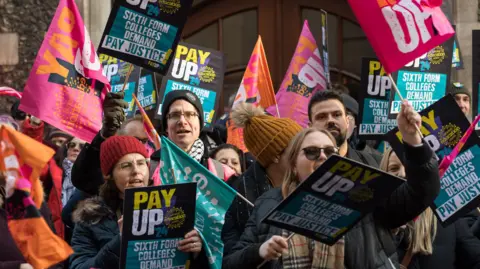### Public Sector Workers Offered Up to 4.5% Pay Rises
In a significant development for public sector employees, the government has announced that millions will receive pay raises ranging from **3.6% to 4.5%**. This promising news encompasses a variety of professions, including nurses, doctors, and teachers, signaling a welcome shift in compensation following heightened pressure from unions advocating for better pay.
The decision to endorse this pay increase stems from recommendations made by pay review bodies, which guided the government to exceed its initial budget provision of **2.8%** for wage hikes. Public sector unions had previously indicated plans to initiate actions in response to the insufficient proposed increase, asserting that the 2.8% figure fell short of what was fair and necessary for workers considering the rising cost of living.
However, the government has made clear that while these raises are on the table, they must be financed through cost-cutting measures within existing budgets. The Treasury has indicated that despite the need for enhanced compensation, the funding must arise from savings rather than new expenditures. This emphasizes the ongoing challenge the government faces in balancing adequate pay with fiscal responsibility.
### Pay Segments and Government’s Budget Allocations
In subsequent announcements detailing the pay raises, the government confirmed specific allocations for various public sector roles. For example, **NHS professionals in England**, who primarily work under Agenda for Change contracts, will see an increase of **3.6%**. **Doctors and dentists** have been promised a worthy raise of **4%**, alongside teachers and prison staff. Interestingly, members of the armed forces are slated for the most generous increase of **4.5%**.
To support these wage increases, the **Education Department** has allocated an additional **£615 million**. However, it has also recommended that educational institutions look to enhance their productivity and engage in smarter fiscal practices to partially fund these awards. This raises concerns among education unions, who have welcomed increased salaries but caution that without further financial resources, school budgets could consequently suffer.
As for the **health sector**, officials asserted that cuts to essential frontline services would not be necessary to accommodate these raises. They argue that savings could be achieved by reducing reliance on temporary staff and streamlining services to eliminate duplications and waste. This optimism comes even as analysts and observers remain vigilant about potential impacts on public service efficacy.
### Navigating Inflation and Economic Predictions
Meanwhile, the issue of inflation complicates the landscape for public sector compensation. After a period of falling rates, inflation unexpectedly surged to **3.5%** as reported for the year ending in April, a statistic that government ministers might need to grapple with as they advocate for the new pay deals. The **Bank of England** predicts that inflation may peak at **3.7%** in the latter part of this year before beginning a gradual decline.
The situation harkens back to the previous summer when the government had to address ongoing public sector strikes, agreeing to historically high pay raises of between **4.75% and 6%** for the preceding year. While this decision helped stabilize the economy and quelled public unrest, it also spurred accusations from Conservative critics regarding the government losing control of public sector wage dynamics.
As public sector workers brace for these new wage adjustments, the broader implications for the economy and public services hang in the balance, highlighting the delicate interplay between fair compensation, fiscal responsibility, and inflationary pressures.
### Conclusion
The newly announced pay raises signify a crucial step toward acknowledging the hard work of public sector employees. However, the ramifications of these adjustments need careful monitoring as the government aims to balance meeting workers’ needs against budgetary constraints. With inflation on the rise and economic predictions fluctuating, the government must navigate a complex landscape to ensure that public sector conditions are both sustainable and equitable.



